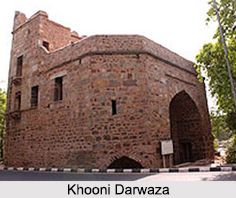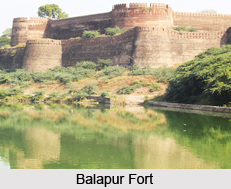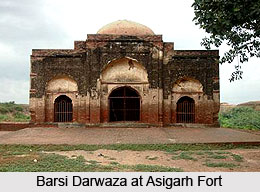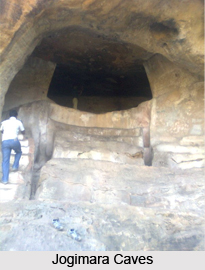 Khooni Darwaza literally meaning `The Gate of Blood` is located in the city of Delhi near the Delhi Gate. It is situated on the Bahadur Shah Zafar Marg. It is also known as Lal Darwaza and is one of the 14 surviving gates in Delhi. Khooni Darwaza was constructed by Sher Shah Suri. The Maulana Azad Medical College is located on the west side of it. The Delhi Gate of Old Delhi is also located about half a kilometer to the south of the gate. The gateway was also known by the name Kabuli Darwaza or Kabuli Gate, because at the time of Sher Shah Suri`s rule in Delhi, caravans to Afghanistan would pass through this northern gate to go towards Kabul.
Khooni Darwaza literally meaning `The Gate of Blood` is located in the city of Delhi near the Delhi Gate. It is situated on the Bahadur Shah Zafar Marg. It is also known as Lal Darwaza and is one of the 14 surviving gates in Delhi. Khooni Darwaza was constructed by Sher Shah Suri. The Maulana Azad Medical College is located on the west side of it. The Delhi Gate of Old Delhi is also located about half a kilometer to the south of the gate. The gateway was also known by the name Kabuli Darwaza or Kabuli Gate, because at the time of Sher Shah Suri`s rule in Delhi, caravans to Afghanistan would pass through this northern gate to go towards Kabul.
History of Khooni Darwaza
According to history the Khooni Darwaza or the Bloody Gate was named after a heinous act that took place here. Mughal Emperor Bahadur Shah Zafar"s sons, Mirza Mughal, Khizr Sultan and grandson Mirza Abu Bakr were killed here by William Hodson on September 22, 1857 during the Great Indian revolt. Hodson after acquiring the surrender of Bahadur Shah II insisted upon unconditional surrender from the three princes at the Tomb of Humayun. The three princes then assembled with a huge army who revolted and protested. However, Hodson had an army of one hundred horsemen. He thus could easily stand against the huge army of the three princes and ordered them to disarm. Everyone followed his order. During their journey to the Red Fort, Hodson stopped the carriage carrying the princes. He ordered them to get down at a particular spot and stripped them naked. He then shot them dead at point blank range. The dead bodies were then put to public display in front of a Kotwali.
During the revolt of the 1857 the Khooni Darwaza was just an archway and not a gateway in the true sense of the term. Many legends and incidents have been associated with the gate. When Akbar`s son Jahangir ascended to the throne he was resisted by some of the Navaratnas of Akbar. Jahangir thus ordered for the death of the two sons of Abdul Rahim Khan-I-Khana, one of the Navratnas, at the Khooni Darwaza. Their bodies were later left to rot at the gate. Shah Jahan`s son Aurangzeb once in a battle defeated his elder brother Dara Shikoh for the struggle of the throne. After winning the battle he beheaded him and had displayed his head at the gate. Khooni Drrwaza had also stood at the place and witnessed the bloodshed that took place in 1739 when Delhi was raided by Nadir Shah of Persia.
Another important event took place here post independence. Heavy bloodshed occurred here near the gate during the riots of 1947. Several refugees were then marching towards a campo that was constructed for them at the Purana Quila. They were all ordered to be killed here. Khooni Darwaza is today a protected and well maintained monument under the aegis of the Archaeological Survey of India. The gate was however sealed for the general public following a terrible incident that took place.
Architecture of Khooni Darwaza
The Khooni Darwaza has been constructed in a simple way. The gate is 15.5 m in height and adorned with Delhi quartzite stone. There are three staircases here that lead to various levels of the gate. Earlier, the gate was located on an open land but later many other buildings developed around the gate. The Khooni Darwaza today can be seen standing on the Bahadur Shah Zafar Marg located opposite the Feroz Shah Kotla cricket ground, on the east direction.
Visiting Information to Khooni Darwaza
Indira Gandhi International Airport and Delhi Railway Station are the nearest to this spot. National Highway 8 connects Delhi to other major cities of India.




